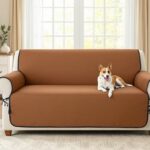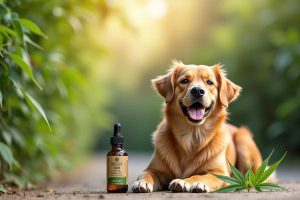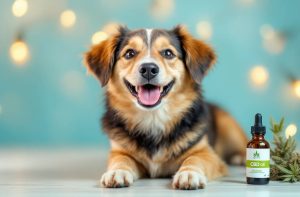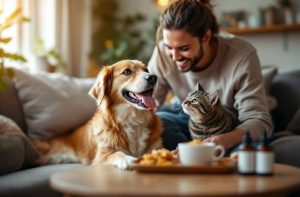In recent years, dressing up pets has become a delightful trend, with pet costumes gaining popularity among animal lovers and social media enthusiasts alike. From playful pups to fashionable felines, pet costumes provide a fun way to showcase your furry friend’s personality and join in on celebrations and special occasions.
However, choosing the right costume goes beyond just aesthetics; it’s crucial to consider both comfort and style to ensure your pet is happy and safe.
This article aims to guide pet owners through the process of selecting the perfect costume for their pets. By focusing on key factors such as fit, material, and safety, we’ll help you find a costume that not only looks great but also makes your pet feel comfortable and confident.
Whether you’re preparing for a holiday event or just want to add a bit of flair to your pet’s wardrobe, this guide will provide you with all the tips you need to make the right choice.
Understanding Your Pet’s Needs
Comfort First
When selecting a costume for your pet, comfort should be your top priority. The right costume should not only look good but also allow your pet to move freely and comfortably.
1. Importance of Material and Fit
- Material: Choose costumes made from soft, breathable fabrics such as cotton or lightweight polyester. Avoid materials that are too heavy or scratchy, as these can irritate your pet’s skin or make them feel uncomfortable. Look for costumes with linings or padding that are gentle on your pet’s fur and skin.
- Fit: Ensure the costume fits properly by checking the sizing charts provided by the manufacturer. A well-fitting costume will neither be too tight nor too loose. Tight costumes can restrict your pet’s movement and breathing, while loose costumes might pose a tripping hazard or get caught on objects.
2. Avoiding Costumes That Restrict Movement or Breathing
- Movement: Pets should be able to walk, run, and play without feeling restricted. Opt for costumes with adjustable straps or stretchy components to accommodate your pet’s natural movements. Avoid costumes that have stiff or bulky elements that might hinder their mobility.
- Breathing: Make sure the costume allows for proper ventilation. Costumes with high collars, tight-fitting elements around the neck, or covering the face can interfere with your pet’s ability to breathe comfortably. Always check for signs of discomfort, such as panting or reluctance to move, and adjust or remove the costume if necessary.
Safety Considerations
When selecting a costume for your pet, safety is as crucial as comfort. Ensuring that the costume is free from hazards will help keep your pet safe and happy.
1. Checking for Small, Detachable Parts
- Detachable Parts: Examine the costume for any small, detachable elements such as buttons, beads, or decorations. These parts can easily come loose and pose a choking hazard if ingested. Opt for costumes with securely attached components or ones that have minimal small parts.
- Stitching and Seams: Inspect the stitching and seams of the costume to ensure there are no loose threads or areas where parts might come undone. Well-constructed costumes are less likely to have parts that can fall off and become a danger to your pet.
2. Ensuring No Parts Could Cause Choking or Irritation
- Choking Hazards: Avoid costumes with small, easily removable items that could be swallowed. Ensure that any decorations are securely attached and that there are no small pieces that could become detached during wear.
- Irritation: Look for costumes with soft, non-abrasive materials, especially around sensitive areas like the neck, legs, and belly. Check for any tags or labels that might cause irritation and ensure they are well-covered or removed. Be mindful of costumes that might cause allergic reactions or skin irritations. If your pet has sensitive skin, opt for hypoallergenic fabrics and avoid costumes with rough textures or harsh dyes.
Matching the Costume to Your Pet’s Personality
Reflecting Your Pet’s Nature
Choosing a costume that aligns with your pet’s personality can make the experience more enjoyable for both you and your furry friend.
1. Choosing Costumes that Align with Their Personality
- Playful Pets: For pets that are energetic and love to have fun, consider costumes that are vibrant, whimsical, or interactive. Outfits with funny themes, like a superhero or a clown, can enhance their playful nature.
- Calm Pets: For pets with a more relaxed demeanor, choose costumes that are understated and simple. Classic themes like a pumpkin or a cute animal costume might be more fitting and comfortable for them.
- Energetic Pets: If your pet is always on the move, look for costumes that are easy to put on and take off, and that won’t hinder their activity. Costumes with flexible materials and adjustable fittings will accommodate their lively behavior without causing discomfort.
Considering the Pet’s Size and Breed
Selecting a costume that complements your pet’s size and breed ensures a better fit and a more flattering appearance.
1. Selecting Costumes that Complement Your Pet’s Body Shape and Size
- Size Matters: Measure your pet’s neck, chest, and length to find a costume that fits well. Make sure to follow the manufacturer’s size chart and consider any additional sizing recommendations based on your pet’s measurements.
- Breed-Specific Fits: Different breeds have unique body shapes and proportions. For example, a costume that fits a small Chihuahua may not be suitable for a larger breed like a Labrador. Choose costumes designed with breed-specific fits or adjustable features to accommodate various body types.
- Avoiding Ill-Fitting Costumes: Ensure that the costume is neither too tight nor too loose. A well-fitting costume should allow your pet to move comfortably and without restriction. Costumes that are too tight can cause discomfort and restrict movement, while overly loose costumes can lead to tripping or tangling hazards.
Practical Tips for Measuring Your Pet
Measuring Correctly
Accurate measurements are essential to ensure a proper fit for your pet’s costume. Follow these steps to measure your pet effectively:
1. Measuring the Neck
- Instructions: Use a flexible measuring tape to measure around the base of your pet’s neck, where a collar would normally sit. Ensure the tape is snug but not tight. Note this measurement to find a costume with an appropriate neck opening.
2. Measuring the Chest
- Instructions: Measure around the fullest part of your pet’s chest, usually just behind the front legs. This measurement is crucial for ensuring that the costume fits comfortably around the torso without being too tight.
3. Measuring the Length
- Instructions: Measure from the base of your pet’s neck (where it meets the shoulders) to the base of its tail. This helps determine the overall length of the costume to ensure it fits well from front to back.
Using Size Charts
Interpreting size charts correctly can help you choose a costume that fits your pet’s measurements.
1. How to Interpret Size Charts
- Compare Measurements: Match your pet’s measurements to the size chart provided by the costume manufacturer. Most size charts will list neck, chest, and length measurements, along with corresponding size labels (e.g., Small, Medium, Large).
- Consider Breed-Specific Charts: Some brands offer size charts tailored to specific breeds or types of pets. Use these if available, as they can provide a more accurate fit based on your pet’s breed and size.
2. Finding the Best Fit
- Choosing Between Sizes: If your pet’s measurements fall between two sizes, consider the costume’s material and design. For a more fitted look, choose the smaller size, but if the costume needs to accommodate growth or movement, opt for the larger size.
- Adjustable Features: Look for costumes with adjustable straps or closures, which can help accommodate slight variations in size and provide a more customized fit.
Account for Growth
If your pet is still growing or fluctuates in weight, consider these adjustments when selecting a costume.
1. Adjustments for Growing Pets
- Size Up: Choose a slightly larger size to allow for growth. Costumes with adjustable features can help accommodate your pet’s changing size as they grow.
- Consider Custom Options: Some costumes are available in custom sizes or can be adjusted to fit growing pets. These options might be worth exploring if your pet is still in the growth phase.
2. Fluctuating Weight
- Adjustable Costumes: Opt for costumes with adjustable straps or Velcro closures, which can accommodate changes in your pet’s weight and ensure a comfortable fit throughout the year.
- Regular Measurements: If your pet’s weight fluctuates frequently, measure them regularly and choose costumes that offer some flexibility in fit.
Choosing the Right Material
Selecting the right material for your pet’s costume is essential for ensuring their comfort and safety. Here’s what you need to know about fabric types and the importance of breathability.
Fabric Types
1. Overview of Common Fabrics
- Cotton: Cotton is soft, breathable, and gentle on the skin, making it a great choice for pets with sensitive skin. It’s also easy to clean and generally comfortable for most pets. However, cotton may not be as durable as some other fabrics and can become less breathable when wet.
- Polyester: Polyester is durable, lightweight, and resistant to wrinkles and shrinkage. It’s often used in costumes for its ability to hold vibrant colors and resist stains. While it’s generally comfortable, it may not be as breathable as natural fibers, so look for polyester blends if breathability is a concern.
- Fleece: Fleece is soft and warm, ideal for cooler weather. It provides good insulation and is usually very comfortable. However, it may be too warm for pets in hotter climates, so it’s best used for winter costumes or cooler indoor environments.
- Nylon: Nylon is water-resistant and durable, making it suitable for costumes that might get wet or be subjected to wear and tear. It’s usually lightweight but can sometimes be less breathable, so ensure it has proper ventilation or consider it for short-term wear.
Comfort and Breathability
1. Importance of Choosing Breathable Materials
- Comfort: Breathable materials help regulate your pet’s body temperature and prevent overheating. Pets, especially those with thick fur or those who are more active, can quickly become too warm in costumes made from non-breathable fabrics.
- Sensitive Skin: For pets with sensitive skin or allergies, choosing a costume made from breathable, hypoallergenic materials is crucial. Natural fibers like cotton are less likely to cause irritation compared to synthetic fabrics.
- Ventilation: Ensure the costume allows for proper airflow to keep your pet comfortable. Look for costumes with mesh panels or ventilation openings, especially if the material is less breathable. This can help prevent your pet from getting too hot or uncomfortable during wear.
- Fit and Adjustments: Even with breathable materials, it’s important to choose a costume with a good fit and adjustable features to avoid constricting your pet’s movement or causing discomfort.
By considering these factors, you can choose a costume that not only looks great but also ensures your pet’s comfort and well-being.
Cost vs. Quality
When choosing a pet costume, balancing cost and quality is important to ensure you get the best value for your money. Here’s how to approach budgeting and investing wisely in pet costumes.
Budgeting for Pet Costumes
1. Average Price Range
- Low-End Costumes: Typically range from $10 to $30. These are often made from basic materials and may include simpler designs or fewer features. They are suitable for occasional use or for pets who are not very active in their costumes.
- Mid-Range Costumes: Usually priced between $30 and $60. These costumes often feature better quality materials, more detailed designs, and additional comfort features. They are ideal for more frequent use or for pets who will be wearing the costume for longer periods.
- High-End Costumes: Priced from $60 and up. These costumes are often made from premium materials, offer custom fits, and have elaborate designs. They are designed for durability and maximum comfort, making them suitable for special occasions or frequent wear.
2. What to Expect
- Material Quality: Lower-priced costumes may use less durable fabrics and have simpler construction. Mid-range costumes usually offer a balance of quality and affordability, while high-end costumes often feature premium fabrics and intricate details.
- Features: Costumes in higher price ranges may include additional features like adjustable fittings, high-quality closures, and special design elements. Lower-priced costumes might lack these enhancements.
Investing in Quality
1. Benefits of Spending a Bit More
- Durability: Higher-quality costumes are generally made from more durable materials that can withstand wear and tear. Investing in a well-made costume ensures it will last longer, even with frequent use.
- Comfort: Premium costumes often offer better construction, including softer fabrics, better fit, and more thoughtful design features that enhance your pet’s comfort. A well-designed costume reduces the risk of irritation or discomfort.
- Fit and Adjustability: Higher-end costumes usually provide more accurate sizing and adjustable features to ensure a better fit. This reduces the likelihood of the costume being too tight or too loose, which can affect your pet’s comfort and safety.
- Aesthetics and Design: Spending more can also mean better attention to detail in the costume’s design. High-quality costumes often have more intricate and appealing designs, making them stand out in photos and during events.
2. Long-Term Value
- Reusability: Quality costumes are more likely to be reusable for multiple occasions or even for different pets. A well-made costume can be a good investment if you plan to use it more than once or pass it on.
- Maintenance: Higher-quality costumes often withstand repeated washings and generally wear better than cheaper alternatives. Investing in a higher-quality costume can save you money in the long run by reducing the need for replacements.
By considering both your budget and the benefits of quality, you can find a pet costume that meets your needs and ensures your furry friend looks great while staying comfortable.
Trying On and Adjustments
Ensuring that your pet’s costume fits well and is comfortable is crucial for their enjoyment and safety. Here’s how to properly fit and adjust a costume for your furry friend.
Fitting the Costume
1. How to Check if the Costume Fits Well
- Initial Try-On: Gently place the costume on your pet and observe how it fits. Check that it covers the intended areas without being too tight or too loose. Ensure that the costume doesn’t restrict your pet’s movement or interfere with their normal activities.
- Check Key Areas:
- Neck: Ensure that the neck opening is comfortable and not too tight. There should be enough room to fit a couple of fingers between the costume and your pet’s neck.
- Chest and Belly: Verify that the costume is snug but not restrictive around the chest and belly. Check that the costume doesn’t pinch or rub against the skin.
- Legs and Tail: Make sure the costume allows free movement of the legs and tail. It shouldn’t bunch up or hinder your pet’s ability to walk, sit, or wag its tail.
2. Observing Your Pet’s Behavior
- Comfort: Watch for signs of discomfort, such as excessive scratching, panting, or reluctance to move. These may indicate that the costume is not fitting properly or is causing irritation.
- Behavioral Cues: If your pet seems anxious or tries to remove the costume, it might be too tight or uncomfortable. Allow your pet some time to get used to the costume, but be prepared to make adjustments or remove it if they show persistent signs of distress.
Making Adjustments
1. Tips for Adjusting the Costume
- Adjustable Features: Utilize any adjustable straps, Velcro closures, or elastic bands to modify the fit. Loosen or tighten these features as needed to ensure a comfortable and secure fit.
- Tailoring: For costumes that are too large, consider using fabric tape or a needle and thread to make temporary adjustments. Ensure that any modifications are secure and won’t cause discomfort or pose a hazard.
- Padding and Linings: If the costume has uncomfortable seams or edges, add soft padding or a lining to prevent rubbing or irritation. Ensure any added materials are securely attached and do not interfere with your pet’s movement.
2. Making Modifications for Better Fit
- Hem Adjustments: For costumes that are too long, you can hem the fabric or roll it up to avoid tripping hazards. Be careful to avoid creating any sharp edges that could irritate your pet.
- Securing Loose Parts: If the costume has loose or flapping parts, use safety pins or fabric glue to secure them. Ensure these adjustments do not pose any risk of choking or irritation.
- Customizing for Comfort: Consider adding adjustments such as soft collars or breathable panels to enhance comfort. For pets with specific needs, like those with extra-furry coats or sensitive skin, customizing the costume can provide a better fit and increased comfort.
By carefully fitting and adjusting the costume, you can ensure that your pet is not only stylish but also comfortable and safe.
Considering Seasonal and Thematic Options
Choosing a costume that aligns with the season or theme can add a fun touch to your pet’s wardrobe. Here’s how to select the perfect seasonal or thematic costume for your furry friend.
Seasonal Costumes
1. Ideas for Costumes for Different Holidays or Seasons
- Halloween: Popular choices include pumpkins, ghosts, witches, and classic monsters. For a festive touch, consider costumes that light up or have glow-in-the-dark elements.
- Christmas: Festive costumes can include Santa Claus, reindeer, elves, or snowmen. Look for costumes with cozy materials like fleece to keep your pet warm during the winter season.
- Thanksgiving: Turkeys, pilgrim outfits, or autumn-themed costumes with leaves and pumpkins can celebrate the harvest season. Consider costumes that are comfortable for long gatherings and easy to clean.
- Easter: Bunnies, chicks, or spring flowers are great choices. Opt for light and airy materials to keep your pet cool in warmer spring weather.
- Valentine’s Day: Heart-themed costumes or adorable Cupid outfits can showcase love and affection. Choose costumes with soft fabrics for a comfortable fit.
2. Seasonal Adaptations
- Warm Weather: For hot seasons, choose lightweight, breathable costumes that won’t overheat your pet. Avoid heavy fabrics and opt for cool, moisture-wicking materials.
- Cold Weather: In colder months, look for costumes made from warm fabrics like fleece or wool. Costumes with built-in sweaters or layers can provide extra warmth.
Thematic Costumes
1. Popular Themes
- Superheroes: Costumes featuring iconic superheroes like Batman, Wonder Woman, or Spider-Man can be a hit. These themes are great for pets with a bold and adventurous personality.
- Fairy Tales: Consider costumes inspired by classic fairy tales, such as princesses, knights, or dragons. These themes can be whimsical and suit pets with a playful nature.
- Historical Figures: Historical or cultural costumes, like pharaohs, kings, or ancient warriors, can be both educational and fun. These themes might work well for pets with a dignified or regal demeanor.
- Animals: Matching your pet’s costume to other animals, such as lions, tigers, or butterflies, can be cute and thematic. This is ideal for pets with a naturally curious or expressive personality.
2. Choosing a Theme that Suits Your Pet’s Character
- Pet’s Personality: Reflect your pet’s traits in their costume. For example, a playful and energetic pet might enjoy a superhero or animal costume, while a calm and laid-back pet might prefer a cozy holiday-themed outfit.
- Comfort and Fit: Ensure that the thematic costume is comfortable and fits well, regardless of the theme. Look for costumes that allow your pet to move freely and don’t cause any discomfort.
- Occasion: Consider the event or setting where the costume will be worn. Choose a theme that fits the occasion and complements your pet’s role, whether it’s a Halloween party, a holiday gathering, or a themed photoshoot.
By selecting seasonal or thematic costumes that match your pet’s character and the occasion, you can create memorable and enjoyable experiences for both you and your furry friend.
Conclusion
Choosing the perfect pet costume involves careful consideration of comfort, fit, material, and theme. By focusing on your pet’s needs—ensuring the costume is comfortable, safe, and well-fitted—you can find an outfit that not only looks fantastic but also allows your furry friend to move and play with ease. Remember to select a costume that reflects your pet’s personality and suits the occasion, whether it’s a seasonal celebration or a thematic event.
Have fun with the process of dressing up your pet and enjoy the moments of joy and laughter that come with it. The right costume can create memorable experiences and add an extra touch of excitement to any occasion.
We’d love to see how your pets shine in their costumes! Share photos of your furry friends dressed up and join the fun by posting on social media with the hashtag #PetCostumeFun. For more costume ideas and options, check out our recommended pet costume retailers and online stores. Find the perfect outfit for your pet and make every occasion a special one!





















